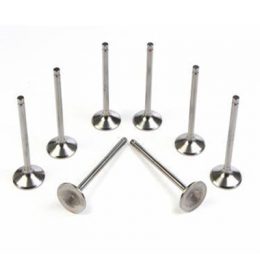Flow in One Direction: Exploring Marine Check Valves
Exploring Marine Check Valves
Marine check valves are essential components in any marine system that requires the flow of fluids in one direction. These valves prevent backflow, ensuring the safety and efficiency of the system. From ball to swing check valves, there are various types of marine check valves available in the market. Choosing the right valve for your vessel is crucial for its proper functioning. In this article, we will explore the importance, working, types, materials, maintenance, and real-world applications of marine check valves.
Flow in One Direction: The Importance of Marine Check Valves
Marine check valves are designed to allow fluid to flow in one direction while preventing backflow. This is crucial in marine systems as backflow can cause damage to the equipment and even lead to accidents. For example, in a bilge pump system, backflow can cause the pump to run continuously, leading to battery drain and pump failure. In a seawater cooling system, backflow can cause the engine to overheat, leading to engine damage. Marine check valves ensure the safety and efficiency of the system by maintaining the flow in one direction.
How Do Marine Check Valves Work?
Marine check valves work on the principle of a one-way flow path. The valve allows fluid to flow in one direction, but when the flow reverses, the valve closes, preventing backflow. There are various types of marine check valves, including ball, swing, and diaphragm valves. In a ball check valve, a ball sits in the valve body, allowing fluid to flow in one direction. When the flow reverses, the ball is pushed against the valve seat, preventing backflow. In a swing check valve, a disc swings on a hinge, allowing fluid to flow in one direction. When the flow reverses, the disc swings back, preventing backflow.
Types of Marine Check Valves: From Ball to Swing
There are various types of marine check valves available in the market, each with its unique features and benefits. Ball check valves are simple and reliable, making them ideal for low-pressure applications. Swing check valves are more robust and can handle higher pressures and flow rates. Diaphragm check valves have a flexible diaphragm that seals against the valve seat, making them suitable for corrosive fluids. Piston check valves have a piston that moves up and down to allow fluid to flow in one direction. Choosing the right valve for your vessel depends on the specific application and operating conditions.
Materials Used in Marine Check Valve Construction
Marine check valves are made from a variety of materials, including bronze, stainless steel, PVC, and rubber. Bronze is a popular material for marine check valves as it is corrosion-resistant and durable. Stainless steel is another popular material for high-pressure and high-temperature applications. PVC is a lightweight and cost-effective material for low-pressure applications. Rubber is suitable for corrosive fluids and low-pressure applications.
Choosing the Right Marine Check Valve for Your Vessel
Choosing the right marine check valve for your vessel depends on various factors, including the fluid type, pressure, temperature, and flow rate. It is essential to consider the specific application and operating conditions before selecting a valve. Consulting with a marine engineer or a valve manufacturer can help you choose the right valve for your vessel.
Maintenance and Troubleshooting of Marine Check Valves
Marine check valves require regular maintenance to ensure their proper functioning. This includes cleaning, lubrication, and inspection for wear and tear. Troubleshooting common issues such as leakage and valve sticking can help prevent valve failure. It is essential to follow the manufacturer’s instructions for maintenance and troubleshooting to ensure the valve’s longevity and reliability.
Marine Check Valves in Action: Real-World Applications
Marine check valves are used in various marine applications, including bilge pump systems, seawater cooling systems, and fuel systems. In a bilge pump system, a check valve prevents backflow, ensuring the pump runs efficiently. In a seawater cooling system, a check valve prevents backflow, ensuring the engine runs at the optimal temperature. In a fuel system, a check valve prevents backflow, ensuring the fuel is delivered to the engine reliably.
The Future of Marine Check Valves: Innovations and Advancements
The marine industry is constantly evolving, and so are marine check valves. Innovations and advancements in valve technology are making them more efficient, reliable, and durable. New materials, such as composite materials, are being used to make valves lighter and more corrosion-resistant. Electronic monitoring systems are being integrated into valves to provide real-time data on valve performance. The future of marine check valves looks promising, with new technologies making them safer and more efficient.
Flow in One Direction: Exploring Marine Check Valves
Marine check valves are essential components in any marine system that requires the flow of fluids in one direction. Choosing the right valve for your vessel depends on various factors, including the specific application and operating conditions. Regular maintenance and troubleshooting can help ensure the valve’s longevity and reliability. With advancements in valve technology, the future of marine check valves looks promising, making them safer and more efficient.



